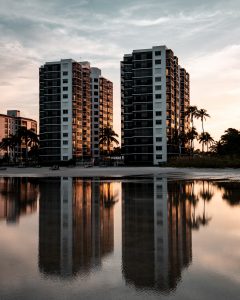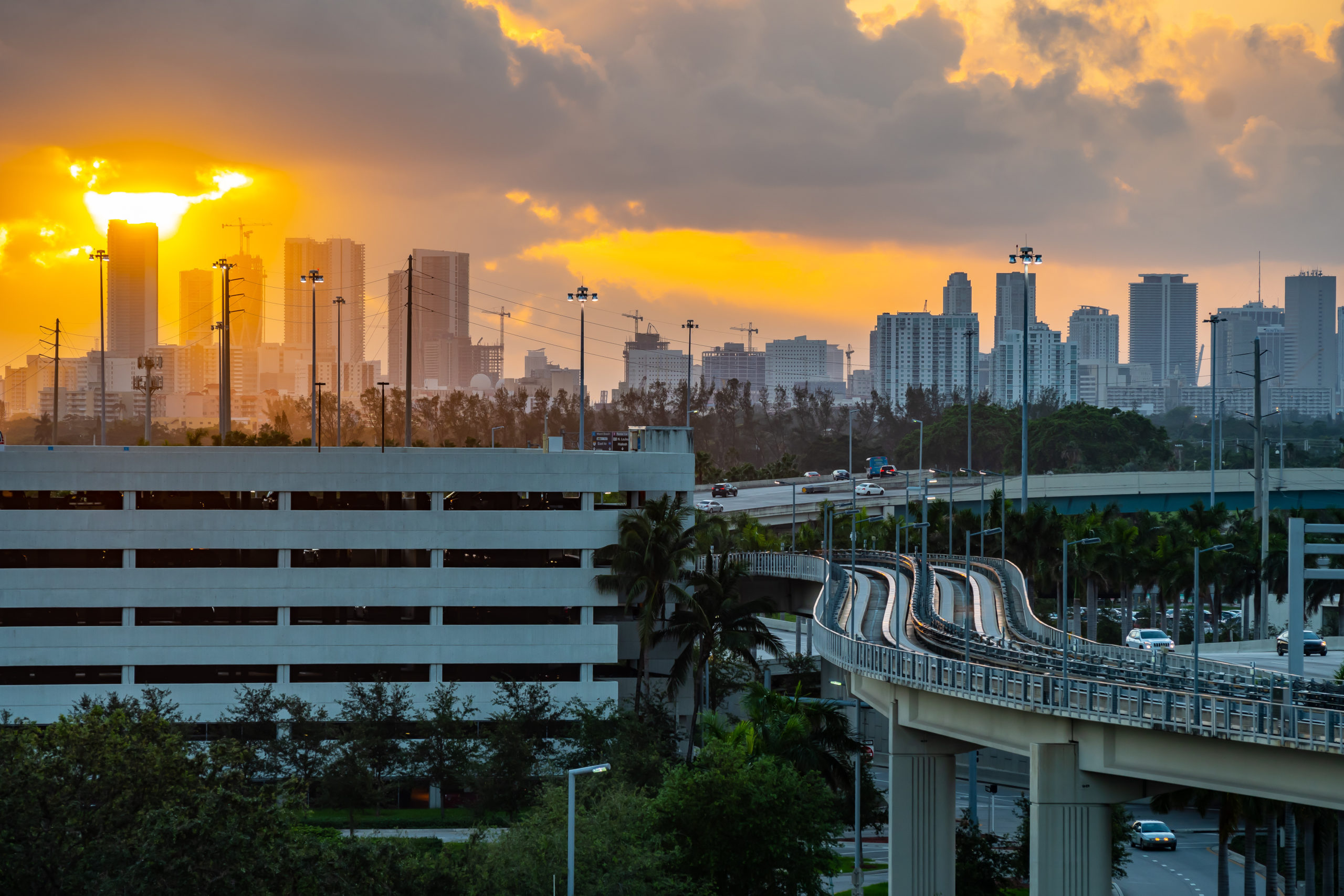We all know that the COVID pandemic didn’t hit every town with equal force at the same time. So it’s no stretch to conclude that not every town will be impacted in exactly the same way by the economic fallout from the health crisis.
And yet, it’s likely that the communities that are most affected financially aren’t necessarily those that were most devastated by the virus itself. And, while we’re still a long way from recovering from either the disease or the cost of its treatment, there is some predictive analytics that suggests where landlords might have the most trouble collecting rents until both have run their course.
Most at Risk Communities
ATTOM Data Solution released a report ranking U.S. housing markets by their vulnerability to the impact of the COVID pandemic. At the time of publishing this blog post, the ATTOM Data Solution report showed that the Northeast has the largest concentration of at-risk counties, while the West and Midwest have the smallest.
That isn’t surprising. But when you drill into the county-by-county breakdown, it’s not what you’d expect.
 Granted, Sharestates is based in and around New York City, so our view might be skewed. Still, the media has appropriately dubbed our town the “epicenter” of the global outbreak, and we venture to say that most people’s enduring image of 2020 to date is some photo of Times Square with nobody in it. But New York County, a.k.a. the Borough of Manhattan isn’t on the list. Bronx County, with the highest proportion of people testing positive in the country and maybe the world? That isn’t either.
Granted, Sharestates is based in and around New York City, so our view might be skewed. Still, the media has appropriately dubbed our town the “epicenter” of the global outbreak, and we venture to say that most people’s enduring image of 2020 to date is some photo of Times Square with nobody in it. But New York County, a.k.a. the Borough of Manhattan isn’t on the list. Bronx County, with the highest proportion of people testing positive in the country and maybe the world? That isn’t either.
Instead, the report reveals that housing markets in 14 of New Jersey’s 21 counties are among the 50 most vulnerable in the country to the economic impact of the novel coronavirus. But the truly bizarre finding is that the second-hardest hit state is Florida, where 10 counties are among the Foreclosed Fifty. In other words, two states account for almost half the potential damage.
And can you think of two states with responses to the pandemic that is more different? In the Garden State, nobody leaves their front yard without personal protection equipment, and, frankly, there’s nowhere to go. In the Sunshine State, hosting spring break seemed at the time to be more important than protecting public health. In the former, decorative masks from Etsy boutiques have become fashion statements. In the latter, a lack of any mask has become a political statement. Granted, New Jersey has been far harder hit, so there is more of a consensus there about the danger just because the danger is more obvious — by an order of magnitude.
ATTOM ranks counties based on an algorithm that factors in the percentage of housing units receiving a foreclosure notice in Q4 2019, the percent of homes underwater in Q4 2019, and the percentage of local wages required to pay for major homeownership expenses. So let’s be clear: This model is predictive. It suggests which communities were most at-risk in the months prior to the pandemic — the ones that were most vulnerable to some disruption or another in early 2020.
Getting Granular On The COVID Impact
“It’s too early to tell how much effect the coronavirus fallout will have on different housing markets around the country. But the impact is likely to be significant from region to region and county to county,” said Todd Teta, ATTOM’s chief product officer. “What we’ve done is spotlight areas that appear to be more or less at risk based on several important factors. From that analysis, it looks like the Northeast is more at risk than other areas. As we head into the spring homebuying season, the next few months will reveal how severe the impact will be.”
The most vulnerable counties in New Jersey include five in the New York City suburban area: Bergen, Essex, Passaic, Middlesex, and Union. Interestingly, Hudson County — which has more confirmed COVID infections than any of them, according to Worldometers — is not on the list. It’s home to posh Hoboken and continuously gentrifying Jersey City, but that can’t be the whole story. Of the bunch, only Passaic has lower per-capita income than Union, and Bergen is one of the wealthiest suburbs in the country. Two of the more down-at-heel New Jersey communities outside the New York metro that made the list are Ocean County, along the Jersey Shore, and Camden County, across the Delaware River from Philadelphia. To its west, Pennsylvania’s Delaware County shares this dubious distinction.

While there are New York counties among the top 50 most at risk of the COVID virus, they’re not in the Five Boroughs. The closest of the four is Rockland County, which is next door to — that is to say a toll bridge away from — Westchester County, the site of New York State’s first hot zone, New Rochelle. Two others, Orange County and Ulster County aren’t too far away, in the Mid-Hudson Valley region. Finally, Rensselaer County is in the Capitol region, near Albany.
Meantime Florida’s COVID cluster is exactly where you’d think — Miami-Dade, Broward, and Palm Beach counties — and yet the economic impact doesn’t seem to be centered along the Gold Coast at all. While Broward does make the list, the risk is concentrated in the northern and central sections of the state, according to ATTOM, particularly Flagler, Lake, Clay, Hernando, and Osceola counties. If you don’t know where they are, you can be forgiven. Hernando is in the Tampa suburbs, and the rest are in the middle of nowhere. Think of Orlando, Jacksonville, and Daytona Beach as an outfield; those counties comprise the swath of shallow left-center where bloop singles land.
Other southern counties that are in ATTOM’s top 50 list are spread across Delaware, North Carolina, South Carolina, Louisiana, and Virginia. The populous suburb of Prince George’s County, Md., is also a risky bet according to the study. Only two ranked counties are in the West: Shasta County, Calif., near Redding, and Navajo County, Ariz., near Phoenix. The five in the Midwest are all in Illinois: McHenry, Kane, Will, and Lake counties, all in the Chicago metro area; and Tazewell County, near Peoria.
And Now Some Good News
But what about those counties at the other end of the spectrum? Is anyone truly immune to the effects of COVID? Apparently yes, sort-of, in an economic armageddon kind of way.
Texas has 10 of the 50 least vulnerable counties in the report. The insulated Texas counties include Dallas, Collin, and Tarrant in metro Dallas-Fort Worth and Ector and Midland in the Midland-Odessa area. Houston’s Harris County is also on the right side of these rankings. And, while that’s welcome news from the point of view of surviving the pandemic financially, they have a cratering oil market to contend with, so maybe they’re not such a safe bet either.
Wisconsin had seven counties on the least-risky list and Colorado with five. Other communities of note include tech industry magnets King County — Seattle — and Santa Clara County, one of the components of Silicon Valley. Again, though, we see some bad news in that good news, as the nearby businesses are exactly those that are never going 100% back to pre-pandemic workplace operations. Many if not most of the employees who were designated to work at home aren’t going back to the office, no matter how many beanbag chairs and foosball tables and Mountain Dew Code Red are on site.
But to leave you with some undiluted good news, a separate ATTOM report shows that much of the foreclosure risk identified in that study remains hypothetical. In reality, there were 156,253 U.S. properties with a foreclosure filing during the first quarter of 2020, and, while that’s up 42 percent from the previous quarter, it’s down 3 percent from the comparable, year-earlier period.


